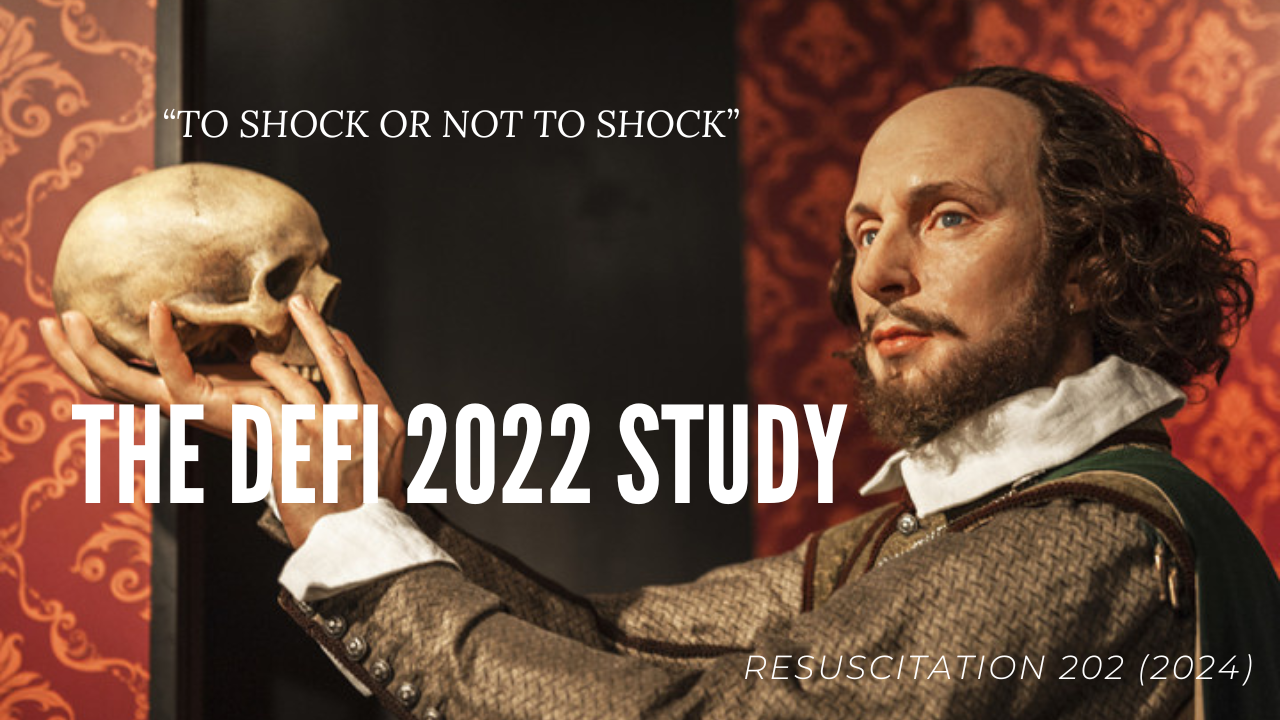There is a significant difference in Out of Hospital Cardiac Arrest (OHCA) survival, in the order of 10 to 20 times, between non-shockable(2% survival) and shockable rhythms(25-50% survival) .
Ventricular fibrillation is the most common shockable rhythm in OHCA. We know that reducing the time to defibrillation increases the chances of ROSC and survival, however the inherent 2 minute cycles built into resuscitation algorithms delay defibrillation. The detection of shockable rhythms, using artifact-filtering for ECG analysis, whilst CPR is being performed, can decrease the time to arrhythmia recognition and defibrillation.
We look at the DEFI 2022 study, which aimed to assess the ability of this technology to analyse cardiac rhythms during cardiac compressions. They compared the cardiac compression fraction in patients using this technology, to those using conventional defibrillation algorithms.
The Study
Derkenne C et al. Analysis during chest compressions in out-of-hospital cardiac arrest patients, a cross/sectional study; The DEFI 2022 Study. Resuscitation 202 (2024) 110292
WHAT THEY DID
This was a cross-sectional study that prospectively looked at OHCA managed by Basic Life Support (BLS) prehospital teams, using an algorithm that analysed during cardiac compressions. They used propensity score matching to compare this to a historical cohort that, used conventional defibrillation.
The study was conducted in the Greater Paris Area.
N = 285 patients were treated in each group…….
WHAT THEY FOUND
It was found that the ‘always sensing algorithm’ was associated with a high chest compression ratio.
The new algorithm:
- resulted in shorter analysis phases
- higher interruptions to cardiac compressions (91% vs 82%)
- analysed rhythms with the following sensitivities/specificities:
- 94.9% [93.7–96.2] for the sensitivity of coarse VF,
- 99.7% [99.4– 99.9] for the specificity of asystole,
- 99.3% [99.0–99.5] for the specificity of other non-shockable rhythms recognition.
- resulted in more shocks at shorter intervals
- resulted in VF recurrences being treated twice as quickly
- resulted in a 40% reduction in the time spent in VF
………………………..
Authors’ Conclusions:
“In our study, the use of the AWC was associated with an improvement in CCF.”
My Take on This
This is a cross sectional study. This is effectively an observational study, with results obtained from a retrospective, historical group, making it difficult to compare specific parameters such as time to drug administration.
To me the most important aspect of this trial was that survival to hospital discharge did not differ. That’s what I want to know.
Read the full review and listen to the podcast on EM MASTERY.










